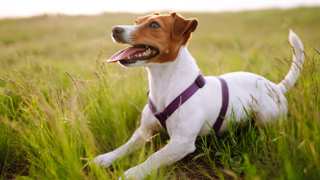Schnoodle Grooming
Schnoodles are medium-maintenance dogs when it comes to grooming. Their coats grow non-stop, shed little and are basically hypoallergenic. While you can trim your Schnoodle's coat to keep it looking good as well as free of debris, you would do best to go to the groomer about 4-6 times annually for a total cut, care and check-up.
Brushing should be done a few times weekly, and close attention should be paid to teeth (brush them at least once a week), nails (have a groomer clip them if you are unsure how to do this, as there are nerve endings partway into the nails), eyes and ears (for excess fluid and unpleasant odors) and skin (for rashes, cuts and other problems).
On this page you will find more specific information regarding the various care, grooming and maintenance of your cute little Schnoodle!


